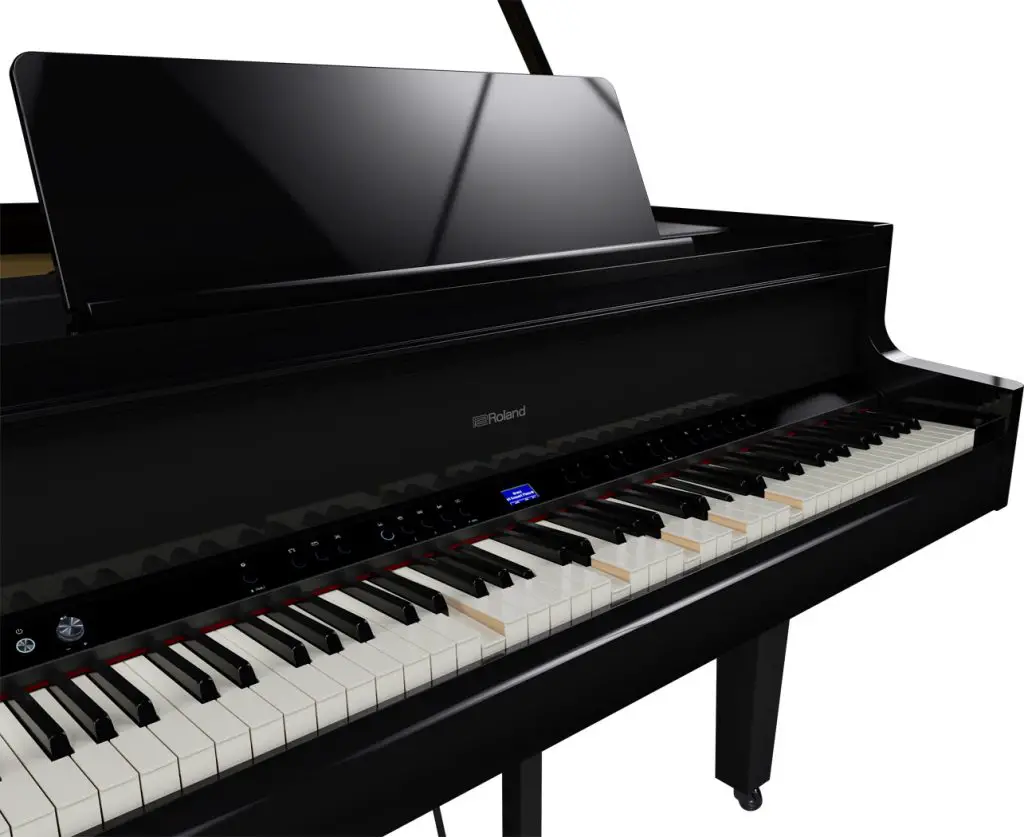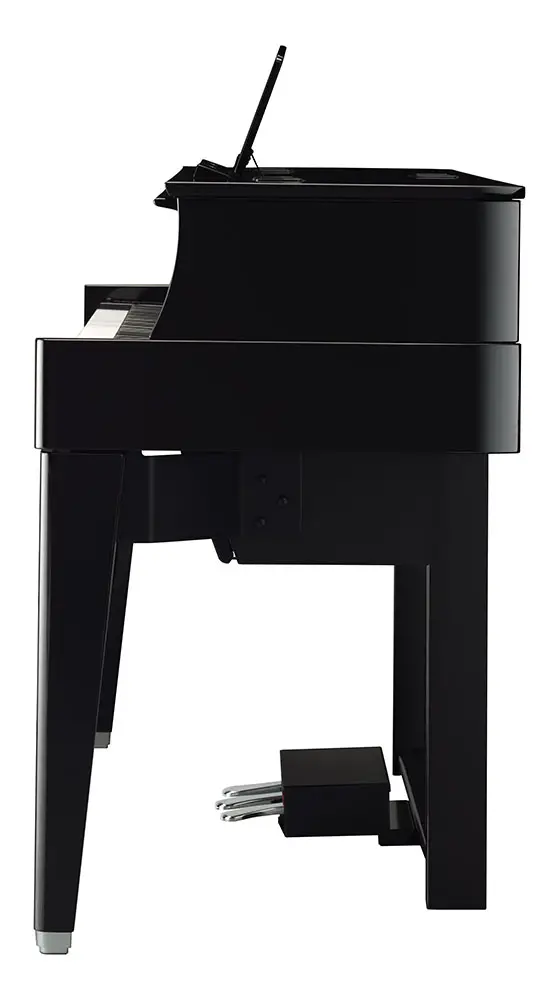What is a hammer action keyboard?
A hammer action keyboard is a type of keyboard found on certain types of electronic musical instruments, such as digital pianos and synthesizers. It is designed to replicate the feel and touch of a traditional acoustic piano keyboard.
The term “hammer action” refers to the mechanism by which the keys are weighted and balanced, using a system of hammers and springs that simulate the hammers of an acoustic piano. When a key is pressed, a hammer mechanism is activated that causes a small hammer to strike a metal or plastic rod, which then produces a sound.
Hammer action keyboards are designed to provide a more realistic and expressive playing experience for pianists, as they are able to replicate the touch and feel of a traditional piano keyboard. There are different types of hammer action keyboards, with varying levels of complexity and weight, ranging from basic to advanced, depending on the instrument and the manufacturer.
They typically have a much heavier play feel, which changes in weight from heavier in the low registers to lighter in the high registers, than semi-weighted keys.

Which instrument manufacturers have hammer action keyboards?
Many manufacturers use hammer action keyboards in their digital pianos and synthesizers. Some of the most well-known manufacturers include Yamaha, Roland, Korg, Casio, Nord, Kawai, Studiologic, Kurzweil, Alesis and Dexibell.
These manufacturers offer different types of hammer action keyboards with varying degrees of realism, feel, and weight, to cater to the needs and preferences of different musicians. Hammer action keyboards are typically used by pianists and keyboardists who want to replicate the feel and touch of an acoustic piano, but with the versatility and functionality of a digital instrument.
While it is difficult to say which manufacturer makes the best hammer action keyboards, as it depends on the individual needs and preferences of each musician, some highly-regarded instruments come from the likes of Yamaha, Roland, Kawai and Nord.
Often, the hammer action keyboard is not constructed by the individual instrument manufacturers themselves, but made by a third party. A common and highly regarded company is the Italian-based Fatar.
Fatar keyboards are generally well-regarded for their high-quality construction and reliable performance. They offer a range of hammer action keyboard assemblies with varying levels of complexity and weight, which can be customized to suit the needs and preferences of different manufacturers and musicians.
What are the advantages of playing a hammer-action keyboard?
The advantage of a hammer action keyboard, particularly in the context of digital pianos, is that it aims to replicate the feel and touch of a traditional acoustic piano. Here are some of the key advantages of a hammer action keyboard:
- Realistic piano-like feel: Hammer action keyboards are designed to mimic the weight and resistance of acoustic piano keys. They incorporate a mechanism that simulates the hammers found in acoustic pianos, resulting in a more authentic playing experience. This allows pianists to develop and maintain proper finger technique, control, and dynamics.
- Enhanced expressiveness: The weighted keys of a hammer action keyboard enable players to achieve a greater level of expressiveness and control over their playing. The ability to vary the touch and pressure on the keys affects the dynamics and volume of the sound produced, just like on an acoustic piano.
- Graduated key weight: Hammer action keyboards often feature graded or semi-weighted keys. This means that the lower keys have a heavier touch, similar to the lower notes on an acoustic piano, while the higher keys are lighter. This graded key weight contributes to a more authentic piano experience, where the touch and response of the keys differ across the keyboard range.
- Suitable for pianists: Hammer action keyboards are particularly favored by pianists who want to practice, rehearse, or perform on a digital instrument without sacrificing the feel and touch of an acoustic piano. They provide a bridge between the acoustic and digital realms, allowing pianists to transfer their skills and technique seamlessly.
- Versatile instrument: Hammer action keyboards are not limited to piano sounds. They can be used with a wide range of virtual instruments and sounds, making them suitable for various genres and musical styles beyond classical piano repertoire.
What are the disadvantages of hammer-action keyboards?
While hammer action keyboards offer several advantages, they also have some potential disadvantages that should be considered:
- Weight and size: Hammer action keyboards are generally heavier and bulkier compared to other keyboard types, such as synth-action or semi-weighted keyboards. This can make them less portable and more challenging to transport.
- Cost: Due to the complexity of their mechanism and the higher-quality components used, hammer action keyboards tend to be more expensive than keyboards with other types of actions. The increased cost may not be suitable for everyone’s budget.
- Maintenance: The hammer action mechanism in these keyboards requires periodic maintenance and adjustments to ensure optimal performance. Over time, the keys may require regulation or even replacement if they become worn or damaged. Regular servicing and maintenance by a qualified technician may be necessary, which can add to the overall cost of ownership.
- Non-uniformity across manufacturers: While hammer action keyboards share the goal of replicating the feel of an acoustic piano, there can be variations in the specific implementation and quality among different manufacturers. The feel and responsiveness of the keys can differ, and some players may prefer the action of one manufacturer over another. It’s important to try out different instruments to find the one that suits your personal preferences.
- Playability for non-pianists: For musicians who primarily play non-piano instruments or focus on synthesizer sounds, the weighted and realistic feel of a hammer action keyboard may not be necessary or desired. Other keyboard action types, such as synth-action or semi-weighted, may offer a more comfortable and versatile playing experience for these individuals.
Conclusion
Musicians aspiring to an authentic acoustic piano experience will appreciate the hammer action feel and response found on high end digital pianos and keyboard controllers. Those who are more interested in synth, electric piano, organ and other music may find a hammer action keyboard is far too heavy to play quickly, particularly if they are not used to an acoustic piano.
In the end, the choice comes down to personal preference and experience.




